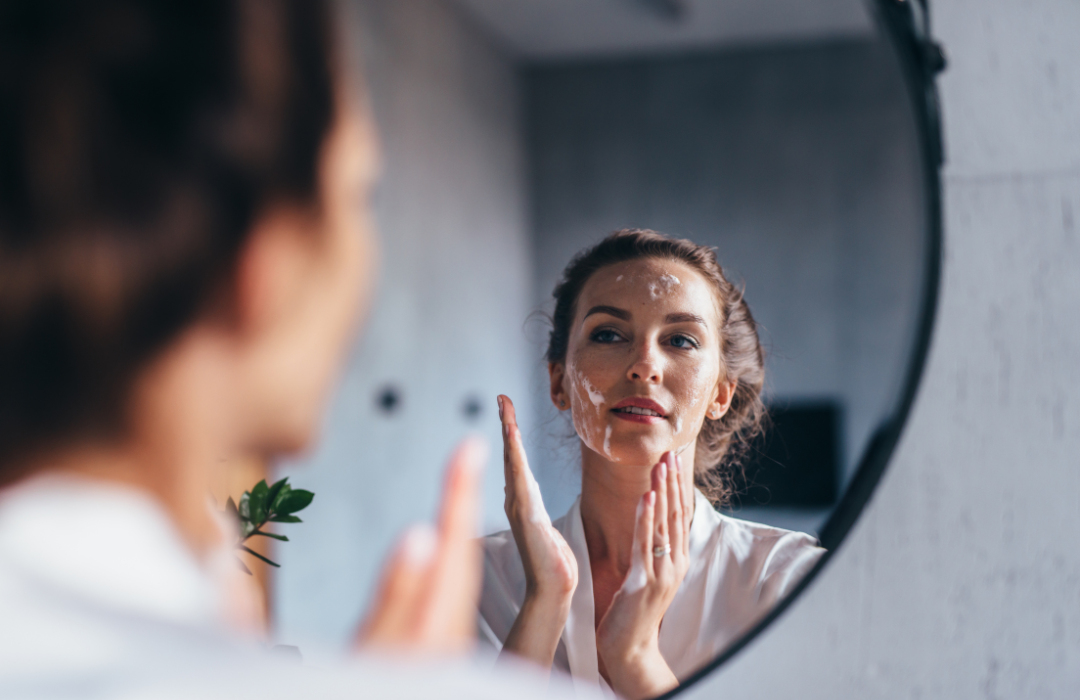Note: As an affiliate, I earn a small commission from qualifying purchases made through links in this post. This helps support my work, but it won't cost you any extra. For more information, please read my full disclosure here.
I’m thrilled to share with you my all-time favorite skincare secret that has been a game-changer for my skin: double cleansing.
Trust me, this isn’t just another trend—it’s a holy grail in my skincare routine that has saved my skin from relentless breakouts and kept it looking fresh and healthy.
So, what’s this magical method all about?
Double cleansing, as the name suggests, involves two simple yet effective cleansing steps. This method has its roots in Korean skincare and has gained immense popularity worldwide for a good reason.
I was initially skeptical, but once I gave it a try, there was no turning back!
In this blog, I’m going to dive deep into the world of double cleansing.
I’ll share with you why it worked wonders for me, how it can benefit different skin types, and the best products and techniques to use.
Whether you’re dealing with acne, oily skin, or just want to step up your skincare game, double cleansing might just be what you need.
What Is the Double Cleansing Method?
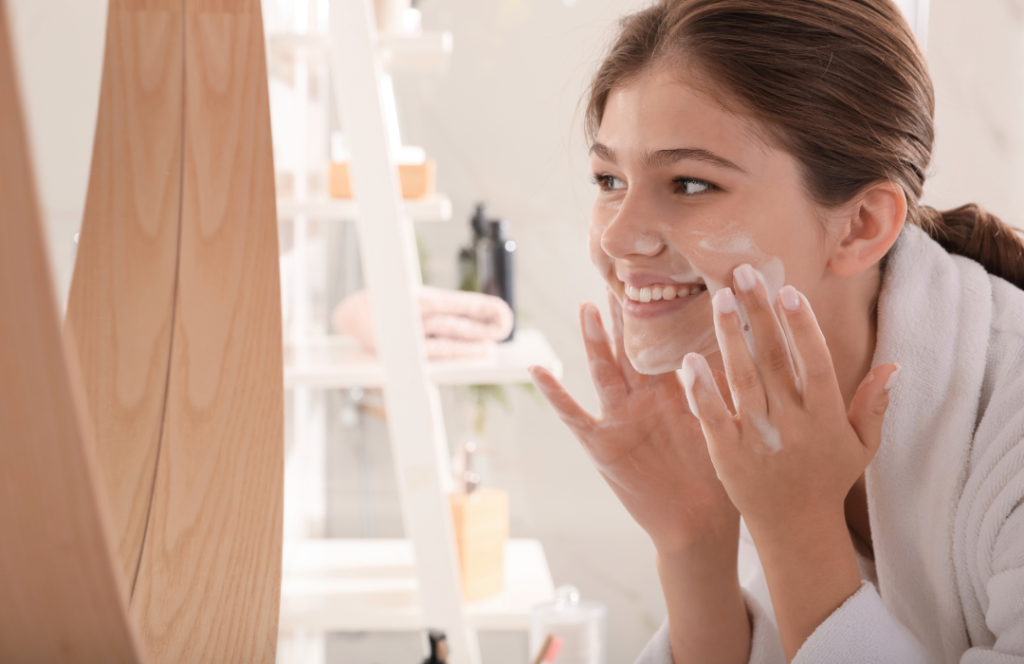
Double cleansing isn’t just about washing your face twice; it’s a refined method that goes much deeper. Inspired by the elaborate beauty routines of Korean and Japanese women, this two-step process is all about meticulous cleansing.
The goal is to achieve crystal-clear skin by targeting different types of impurities in two separate stages.
Step 1: Oil-based cleansing
The first step involves an oil-based cleanser like a cleansing oil or cleansing balm, and it’s a game-changer in how we remove makeup and sunscreen.
Unlike regular cleansers, oil-based formulas excel at dissolving makeup, even the stubborn, waterproof kind.
Modern cleansing oils are formulated with emulsifying agents. This means they transform into a milky lather when mixed with water, making them incredibly easy to rinse off – no greasy residue left behind.
Step 2: Water-based cleansing
After the oil cleanse, we move on to the second hero of this method: the water-based cleanser. This step is crucial for removing deeper-seated impurities like dirt and pollution.
Pollution, in particular, is a major skin foe, contributing to premature aging and dullness. A good water-based cleanser gently but effectively cleanses these impurities away, leaving the skin feeling fresh and truly clean.
Is It Good to Double Cleanse Everyday?
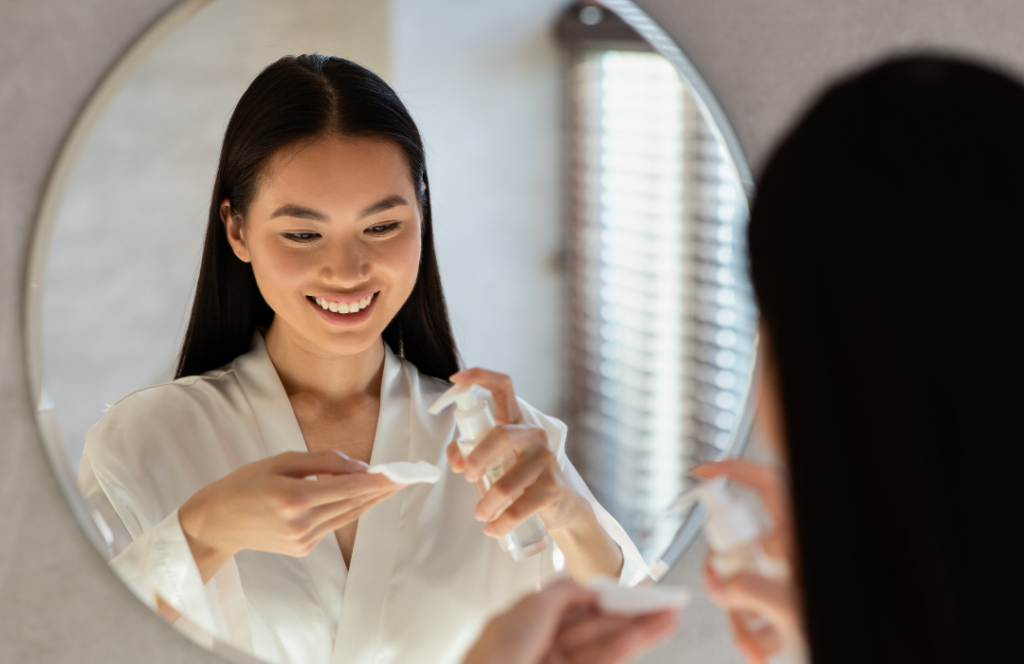
The answer for this question isn’t a simple yes or no – it depends on several factors, including your skin type, lifestyle, and the makeup products you use.
For those with oily or combination skin, daily double cleansing can be a lifesaver. It effectively removes excess oil and prevents clogged pores, which are common issues for these skin types.
As for my personal experience, I use the double cleansing method every single day. Having oily combination skin myself, I’ve seen remarkable results from this routine. Regular double cleansing has helped my skin become clearer and significantly reduced breakouts.
If you have dry or sensitive skin, consider double cleansing only on days when you use heavy makeup or sunscreen. Doing it too often can remove natural oils from your skin and cause irritation.
Your daily activities play a significant role in determining if double cleansing is necessary. If you’re someone who wears makeup regularly or spends a lot of time outdoors, double cleansing can help ensure all traces of makeup and environmental pollutants are removed from your skin.
On makeup-free days or when you’re mostly indoors, a single cleanse might be sufficient.
The key is to listen to your skin. If double cleansing every day leaves your skin feeling dry or tight, it’s a sign to cut back. On the other hand, if your skin feels oily or you notice more breakouts when you don’t double cleanse, it might be beneficial to make it a daily routine.
Who Is the Double Cleansing Method For?
Like I mentioned earlier, double cleansing is a total savior for people with oily or combination oily skin.
It’s this amazing two-step process where you first use an oil-based cleanser and then a water-based one. This combo is just perfect for tackling all those oily skin challenges, like too much shine and the occasional (or not so occasional) breakout.
Plus, if you can’t step out without your makeup, double cleansing makes sure every last bit of it is gone by bedtime, keeping your skin super happy.
And, if you’re living in the city with all that pollution, this method is a big help in keeping your skin fresh and clean from all that daily grime.
It’s pretty much a win for anyone dealing with oily skin, makeup overload, or just city life in general!
Who Should Avoid Double Cleansing?
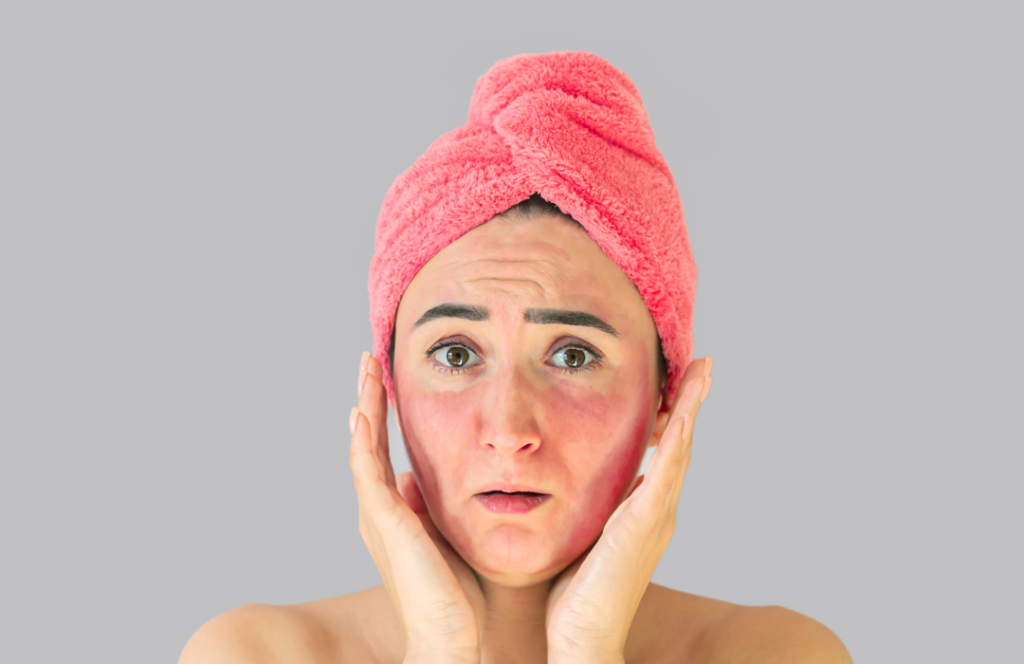
Double cleansing, while great for many, can be a bit too much for those with super sensitive skin or conditions like eczema or rosacea.
If your skin tends to react to just about anything, going through a two-step cleansing process could lead to irritation or even a bit of a freak-out. It’s about more than just using two different products; it’s about how this method can overstimulate sensitive skin and disrupt the natural skin barrier, which is especially crucial for those with sensitivity issues.
Plus, for people with eczema or rosacea, this method can be tricky. The extra rubbing and cleansing action might cause flare-ups and increase irritation.
You know, these skin types often have a compromised skin barrier already, so double cleansing can make it even more vulnerable, leading to dryness and discomfort.
Related post: 9 Clear Signs Your Skin Barrier Is Damaged And How To Fix It
How to Double Cleanse Effectively
1. Begin with a cleansing oil or balm on your dry face using dry hands
- Gently massage it into your entire face for 45-60 seconds.
- Wet your hands and continue massaging for an additional 30 seconds.
- Rinse your face thoroughly.
- If you prefer, you can massage for 1 minute and then rinse off if you plan to shower.
- Don’t exceed a total contact time of 3-5 minutes.
2. Use a water-based cleanser on your wet face
- Massage it in for 45-60 seconds.
- Rinse it off.
3. Apply your skincare
- After double cleansing, apply the rest of your skincare routine while your skin is still damp for the best results
What Are Common Mistakes in Double Cleansing?
When it comes to double cleansing, there are a few common mistakes that can undermine its effectiveness and even potentially harm your skin. Being aware of these can help you optimize the benefits of this skincare routine.
1. Using the wrong products
It’s crucial to choose the right cleansing oils and water-based cleansers for your skin type.
For instance, while natural oils like coconut oil and olive oil have their benefits, they’re not the best choices for cleansing oils.
These oils can be too heavy and potentially clog pores, leading to breakouts. It’s important to use products specifically formulated for facial cleansing that are appropriate for your skin type.
2. Applying cleansing oil on wet skin
One common misstep in the double cleansing process is applying the cleansing oil to wet skin.
This might seem like a minor detail, but it actually makes a big difference.
Cleansing oils are designed to be applied to dry skin, as their primary job is to dissolve and lift away oil-based impurities like makeup and sebum.
When you apply them to wet skin, it can dilute the oil, significantly reducing its effectiveness.
The water creates a barrier, preventing the oil from fully reaching and breaking down the oily substances on your skin. This means you won’t be getting the full cleansing power that the oil is meant to provide.
For the best results, always start with a dry face when using an oil cleanser. This ensures that the cleansing oil can work its magic to the fullest, leaving your skin perfectly prepped for the next step of your routine.
3. Over-cleansing
Taking it too far with double cleansing can lead to the loss of your skin’s essential natural oils, which in turn can cause dryness and irritation.
I remember my first time trying this method; it was such a soothing experience, leaving my skin feeling wonderfully clean and refreshed.
However, the following day, swept up in excitement, I ended up overindulging in the routine.
I spent a good 10 minutes just massaging my face with the cleansing oil, much longer than necessary.
My skin felt uncomfortably tight, and I noticed several red spots popping up – a definite sign that I had gone overboard.
As a result, I had to take a break from double cleansing for three days, focusing heavily on moisturizing to help my skin recover.
So here’s a piece of friendly advice from someone who learned the hard way: keep your double cleansing routine gentle and to the point. Overdoing it can backfire, and trust me, you don’t want to make the same mistake I did!
4. Not rinsing thoroughly
A common mistake many people make, and one I’ve seen often, is rinsing their face too quickly.
This haste can leave behind residue from the oil cleanser, which then interferes with the effectiveness of the second cleansing step.
The leftover oil can create a barrier, preventing the water-based cleanser from penetrating and cleaning the skin as it should.
So, take your time to ensure all the oil is washed off properly. This step is as essential as the cleansing itself to achieve that deep, refreshing clean we all aim for.
5. Using cold water to rinse off cleansing oil
I learned an important lesson about double cleansing that’s often overlooked: using cold water to rinse off the cleansing oil isn’t the best idea.
At first, I thought water temperature wouldn’t make much of a difference, but it actually plays a crucial role.
Cleansing oils are designed to be rinsed off with lukewarm water. Why? Because lukewarm water helps to emulsify the oil, ensuring it mixes well with water and washes away cleanly.
When I used cold water, I noticed it didn’t quite do the job. It felt like there was still a thin layer of oil left on my skin, which isn’t what you want.
This residual oil can clog pores and leave your skin less than perfectly clean.
Ever since I switched to using lukewarm water, the difference has been clear – my skin feels cleaner, and the oil washes off much more effectively.
6. Neglecting to follow with proper skincare
After double cleansing, your skin is perfectly primed to soak up the benefits of your skincare regimen.
I’ve personally noticed that if I skip applying moisturizer or a hydrating serum right after double cleansing, my skin tends to feel dry, and sometimes there’s even a hint of oiliness.
This is a reminder of how crucial it is to replenish your skin’s moisture immediately after cleansing.
Skipping this step can lead to dryness or irritation, as your skin is left without the protective layer it needs.
Always remember to follow up with appropriate skincare products to maintain balance and keep your skin healthy and happy.
7. Doing it twice a day
I get it, the idea behind double cleansing sounds great – using an oil-based cleanser followed by a water-based one to ensure your skin is super clean.
However, doing this both in the morning and evening might not be the best approach. Personally, I think it can lead to some skincare woes.
It can strip your skin of its natural oils, leaving it feeling dry and tight. Plus, it might even kick your oil glands into overdrive as they try to compensate.
Furthermore, overdoing it can potentially irritate your skin, especially if you’re using products with active ingredients. Your skin’s natural barrier could also take a hit, making it more susceptible to environmental factors.
Lastly, you’ll end up using up your cleansing products faster, which can be a bummer if they’re on the pricier side.
Instead, I’d suggest listening to your skin. In the morning, a gentle water-based cleanser should do the trick.
Save the double cleansing routine for the evening when you need to remove makeup, sunscreen, and the day’s impurities. Your skin will thank you for finding the right balance.
Should You Double Cleanse If You’re Only Wearing Sunscreen?
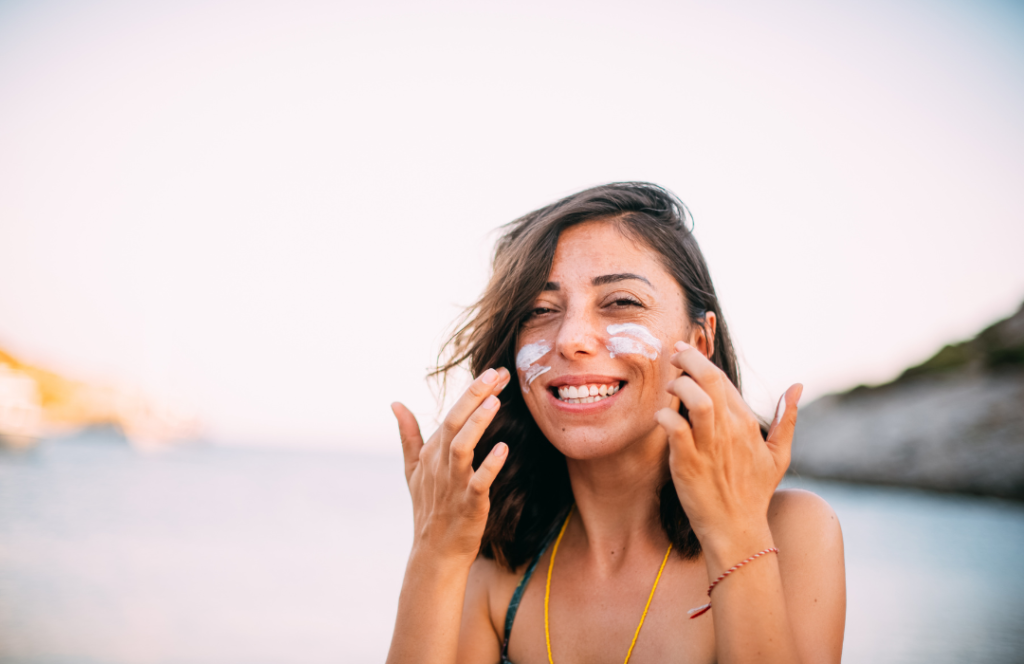
A question I often ponder is whether double cleansing is necessary if I’m only wearing sunscreen and no makeup.
Here’s my take: Unless you have very sensitive skin or conditions like rosacea, you should consider double cleansing, even if it’s just sunscreen you’re wearing.
I personally always stick to my double cleansing routine, even on those makeup-free days when sunscreen is my only shield.
The reason is simple. Modern sunscreens are formulated with various chemicals that help them adhere well to the skin and provide lasting protection.
While this is great for sun defense, it also means they can be quite stubborn to remove. I’ve found that a regular cleanser often doesn’t cut it when it comes to fully removing sunscreen.
An oil cleanser, on the other hand, excels at breaking down these chemicals and ensures that the sunscreen is completely removed from my skin. This is followed by a water-based cleanser to take care of any residual impurities.
By doing this, I make sure my skin is thoroughly clean and ready to absorb the benefits of my post-cleansing skincare products. So, in my experience, double cleansing is a valuable step even when sunscreen is your only concern.
Should You Even Do Triple Cleansing?
Triple cleansing might seem a bit much, but it can be surprisingly helpful, especially on days when you’re wearing a lot of makeup. This approach adds an extra step to the usual double cleansing routine, typically involving a product like micellar water, used either before or after the oil cleanser.
I’ve found this extra step really useful when I’ve got a full face of makeup on. Starting with micellar water works wonders for gently lifting off makeup, particularly stubborn eye makeup and lipstick, which can sometimes give oil cleansers a hard time.
After using the micellar water, I then proceed with my oil cleanser and follow up with a water-based cleanser.
This method ensures that every last bit of makeup is removed, leaving my skin feeling deeply cleansed and refreshed, without any sensation of being stripped or dry.
It’s like a comprehensive deep cleanse, making sure there’s no makeup residue left to clog up my pores.
But it’s worth mentioning that this isn’t something I do every day. I reserve triple cleansing for those special occasions or when my skin really needs an extra thorough cleanse.
On regular days, particularly when my makeup is minimal, my usual double cleansing routine does the trick perfectly.
Conclusion
As we come to the end of this double cleansing deep dive, I hope you’ve found this information as helpful as I found the method beneficial for my skin.
Double cleansing isn’t just a step in your skincare routine; it’s a way to really understand and care for your skin, especially if you’re dealing with oily areas or the daily effects of pollution.
It’s been a game-changer for me, and I think it could be for you too, especially if you have oily or combination skin.
But remember, if you have sensitive skin, approach this method gently. At its heart, double cleansing is about listening to your skin and responding to its needs.
Give it a try, be patient, and you might just see that wonderful difference it can make.
More About Skincare Topic:
8 Unexpected Reasons Why Your Skin Is Breaking Out Over The Holidays
Skin Purging Vs Breakouts: Unmasking The Truth Behind Your Blemishes
9 Clear Signs Your Skin Barrier Is Damaged And How To Fix It

